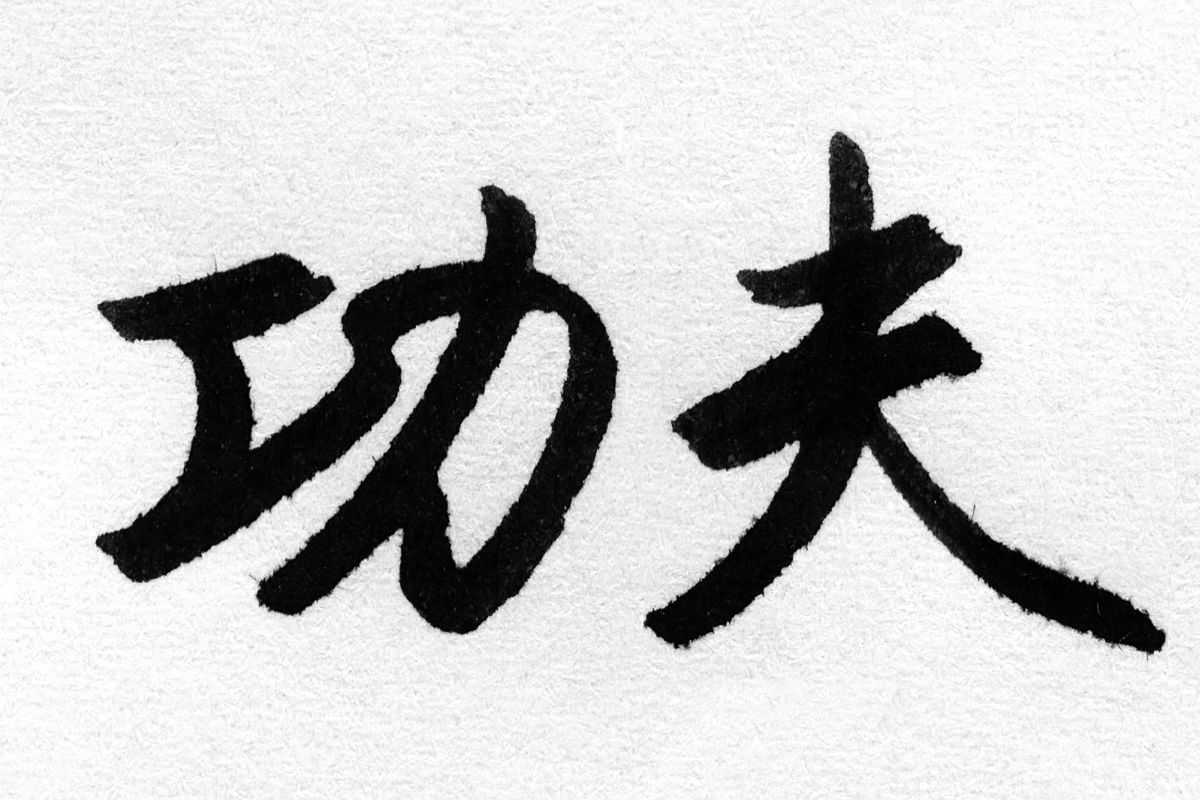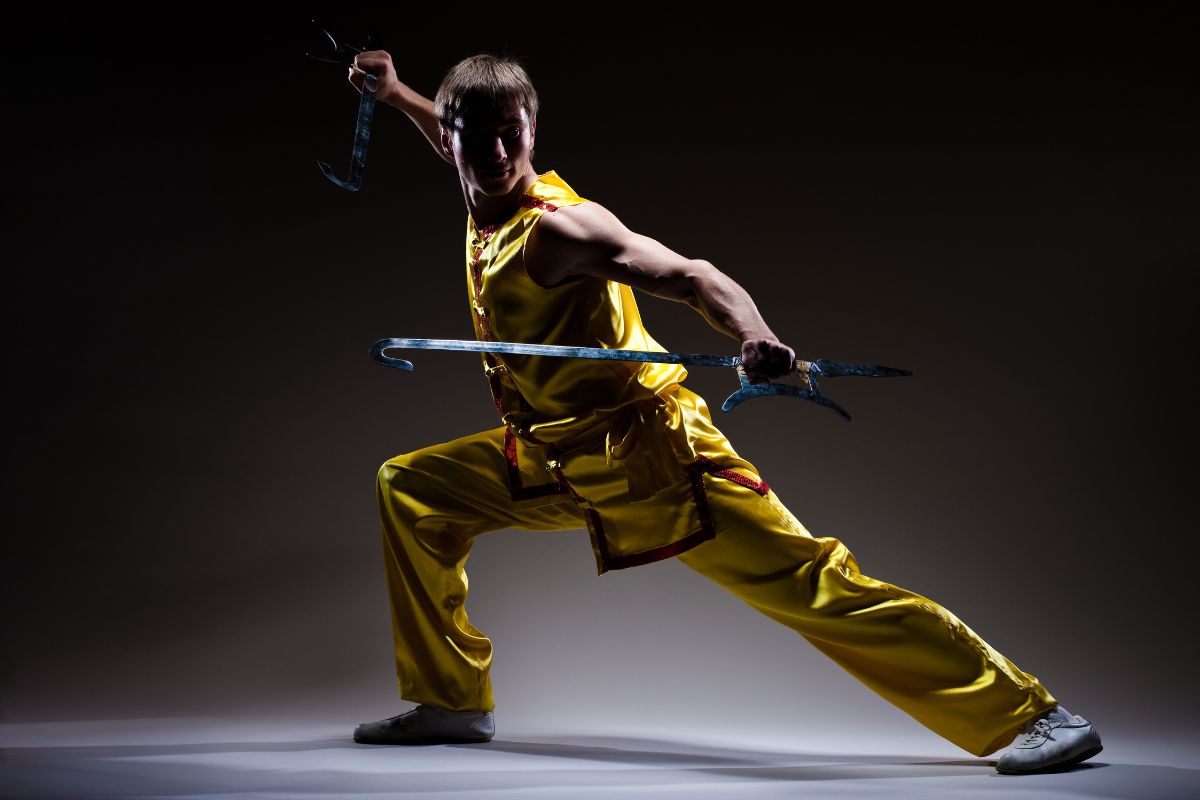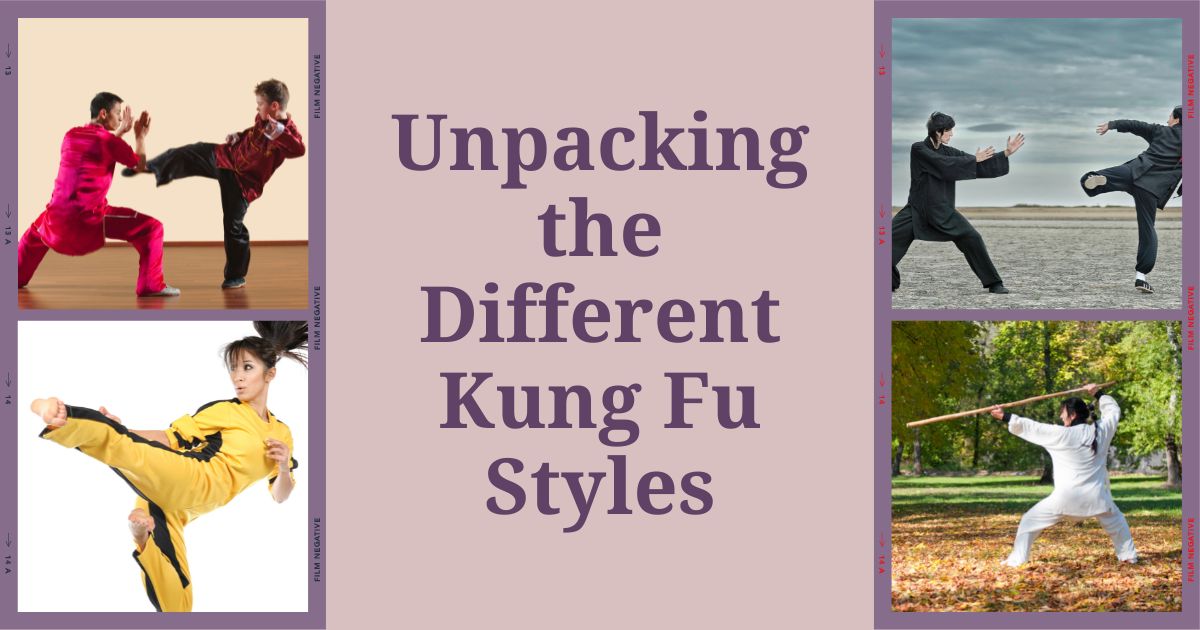Since the first mention of the term Kung Fu, there are now numerous forms of Kung Fu in existence. So many that you would need a write-up like this one to explain all of them.
Follow us as we unpack all of the different Kung Fu fighting styles. We will give you the history of the term and all of the various martial arts styles that are Kung Fu.
What is Kung Fu?
Basically, the term Kung Fu or “Gung Fu” are terms used to encapsulate all Chinese martial arts. Not only is the term used for martial arts, but for any type of skill that a person acquires.
It’s a term that has come to define Chinese martial arts as a whole. No matter what the philosophical differences are, they are all Chinese Kung Fu styles.

Exploring the Origins of Kung Fu
The arts of Kung Fu or Wushu date back thousands of years. Since the first mention of these terms, there are now hundreds of Kung Fu styles in existence.
The Start of Kung Fu
Before Kung Fu was formally taught in China, many historians suggest early hunters were the first to develop fighting styles. This was due to the need to defend themselves when they were out hunting in the forests of China.
The official start of Kung Fu that most historians agree on dates back to 2698 B.C. This was when the Yellow Emperor, Huangdi, came into power over the empire.
Huangdi saw that his soldiers needed formal training to fight and protect the country. This would lead to the formalization of martial arts within the country.
Everything from hand-to-hand combat and weapons training would be taught to the soldiers. The Yellow Emperor would even invent an early form of Chinese wrestling called Jiao Diao.
Initially, people wore horned helmets during Jiao Diao, but they would later evolve into jacket wrestling. Very similar to the Japanese art of Judo, which has many of the same techniques.
The Spring and Autumn Annals
One of the earliest known references to the phrases “martial arts” or “Kung Fu” was in The Spring and Autumn Annals. The Chinese classic text chronicled the State of Lu from 722 to 481 B.C.
This text has the earliest references to martial arts and Kung Fu. Also worth noting is the use of the terms “hard” and “soft” techniques used in these texts.
Formation of the Shaolin Temple
During the 400s, Buddhism began making its way into China. The building of the Shaolin Temple was in 495 AD and led by the temple’s first abbot, Buddhabhadra.
After Buddhabhadra, Bodhidharma would take over as leader of the temple. He would be the one to instill physical training at the monastery as a form of prayer and self-betterment.
Bodhidharma saw that the Shaolin monks were in poor health and needed to improve their health to reach a higher conscience. This is what many consider to be the beginnings of Shaolin-style Kung Fu.
After Bodhidharma, monks began to develop their own Shaolin Kung Fu styles. Starting with the 18 methods of Luohan and evolving into what’s known as the 72 styles of Shaolin Kung Fu.
The Formation of Different Kung Fu Styles
Different styles of Chinese Kung Fu continued to develop through the ages. Each region of China would develop its own types of Kung Fu, making China a hotbed for different fighting styles.
Northern Chinese styles would primarily use long-range attacks, while southern techniques primarily used short-range attacks. Various internal martial arts would also develop through the years.
Kung Fu and Spirituality
Many styles of Kung Fu have ties to spiritualism. During the age when many of the older styles came, so were philosophical and religious practices like Taoism and Confucianism. Also, Buddhism years later.
Many of the creators of different Kung Fu styles were practitioners of these religions. When creating their techniques, they feature the same teachings of self-betterment and spirituality within them.
The Ying and Yang concept from Taoism would lead to the creation of hard and soft Kung Fu techniques.
Internal vs. External Martial Arts
Types of Kung Fu styles are in two different categories. There are internal martial arts, and there are external martial arts.
Internal Martial Arts
Internal Chinese martial arts are styles that focus more on the spiritual side of the spectrum than the physical. In Chinese, these styles are “Neijia.”
Tai Chi is the best-known example of internal martial arts. This style is more about flowing movement and proper breathing.
External Martial Arts
External martial arts are fighting disciplines that tend to focus more on the physical application of techniques than internal. They spend hours perfecting their techniques while strengthening their bodies to exert the most force possible.
The Different Kung Fu Styles Explained
The exact number of different Kung Fu styles is still unknown, but there are said to be over 400 sub-styles. This is a list of Kung Fu styles that are among the most well-known and practiced within Chinese martial arts.
Baguazhang (Pakua Palm)
Baguazhang, or Pakua Palm, as it is known, is one of the three styles taught by the Wudang school. It is one of the more practiced internal martial arts based on Taoism and the Ying and Yang theory.
Bajiquan
A short-range style of Kung Fu that is famous for the use of elbow and shoulder strikes. In English, the name translates to “rake fist” due to a practitioner’s hands being slightly open.
Bak Mei (Pak Mei)
Bak Mei, or Pak Mei, is a form of southern Chinese Kung Fu that focuses on close-range hand strikes. The legend goes that it was the work of and named after Bak Mei, one of the Five Elders of Shaolin.
Changquan (Long Fist)
Changquan, or Long Fist, as it’s known in the west, is one of the quintessential northern Chinese Kung Fu styles. A long-range striking system with a strike-first mentality also teaches joint locks in close range.

Chaquan
Chaquan is another form of Changquan that focuses on long-range attacks. It also features training in long-range weapons like the staff, saber, spear, Chinese broadsword, Guandao, and hook swords.
Choy Gar
One of the five main styles of Kung Fu from southern China is also Caija Quan. A southern style of Kung Fu that features hand striking techniques similar to a snake and the low base of a rat.
Choy Li Fut
This form of Wushu came in 1836 by Chan Heung and mixed techniques from various northern and southern styles. This style of Kung Fu was influential in Bruce Lee‘s creation of the art of Jeet Kune Do.
Chuojiao
A northern Chinese style that includes various kicks and techniques that include jumps, including flying double fist attacks and barrages designed not to let an enemy recover.
Dog Style
One of the very few styles of Kung Fu that features takedowns and ground fighting.
Drunken Fist (Drunken Boxing)
A broad term used for various Chinese martial arts that use movements that mimic a drunk person. Movements that seem like a practitioner is drunk but are actually distractions to land counters.
Five Ancestors Fist
A martial art from Southern China with a basis on five principles of older styles of Kung Fu.
Fujian (White Crane Style)
Fujian, or White Crane Style, is a Southern Chinese martial art developed by Fang Qinang. She was the only female creator of a Kung Fu style that based her techniques on the movements of a crane.
Fu Jow Pai (Tiger Claw)
An offshoot of Five Animal Kung Fu that mimics the movements of a tiger. This is why it was given the name “Tiger Claw.”
Fut Gar
A Southern Shaolin style of Kung Fu that utilizes hand strikes, including fists and palm strikes, and low kicks. Defensively, it uses circular blocking movements and evasive footwork.
Hou Quan (Monkey Kung Fu)
Hou Quan, or Monkey Kung Fu, is one of the various Kung Fu animal styles. A style that mimics many movements that monkeys use, whether climbing trees or defending themselves.
Hung Ga
One of the many Shaolin Kung Fu styles is known for its strong horse stance. Also, its use of the tiger claw attack.
Iron Shirt
One of the 72 Shaolin styles that originated from the Shaolin temple. Having a focus on strengthening the body and posture to develop more powerful strikes.
Nanquan
A southern style of Chinese martial art focuses on short strikes. There are also specific hand movements that separate it from other Southern Chinese martial arts styles.
Ng Ying
Ng Ying Kung Fu consists of different styles known as the “five animals of Kung Fu.” This includes tiger, crane, leopard, snake, and dragon styles, which mimic the movements of the animals that bear their names.
Northern Praying Mantis
One of the most known styles of Northern Chinese martial arts that’s also one of the Kung Fu animal styles. A long-range style that mimics the movements of a praying mantis.
Sanda
A more modern style of Chinese kickboxing originally called Sanshou. It is from different types of Kung Fu and has similarities to Muay Thai and Karate.
Shaolin Kung Fu
Shaolin Kung Fu is the most known of all of the different types of Kung Fu. The legend states that the martial art began soon after the construction of the Shaolin Temple.
Within Shaolin Kung Fu, there are 72 different styles practiced under this style.
Shua Jiao
Shua Jiao is an ancient form of jacket wrestling practiced for centuries. It has many of the same techniques as its Japanese counterpart, Judo.
Tai Chi
Tai Chi is one of the most popular internal Chinese martial arts. Practitioners of this martial art practice it for meditation and other health benefits.
Wing Chun
A popular Southern Chinese form of Kung Fu that consists of quick counterhand strikes and a strong stance.
Wushu
Wushu is another word that encapsulates all Chinese martial arts, like Kung Fu. Any type of martial art in China is a form of Wushu.

Xing Yi Quan
An internal Chinese martial art that teaches simultaneous arm blocks and strikes designed to deliver explosive blows that overwhelm an opponent.
Northern vs. Southern Chinese Martial Arts
When you look into the different Kung Fu styles, there’s a stark contrast between the fighting philosophies of each region. Particularly between the northern Kung Fu styles and the southern Chinese Kung Fu styles.
Here are the significant differences that set apart northern and southern Chinese martial arts.
Stances in Northern vs. Southern Chinese Martial Arts
The first thing you’ll notice between northern and southern Chinese martial arts is their stances. Northern Chinese martial artists tend to stand more upright with a wide stance.
This is because northern styles tend to focus more on agile and graceful movements that flow. Southern practitioners tend to stand more square with their feet grounded to the floor, having more of an emphasis on power than elegance.
Striking in Northern vs. Southern Chinese Martial Arts
To go along with northern styles being more agile, they tend to strike more from a range than southern styles. They tend to use more kicking and jumping attacks, which is why they’re “long fist” styles.
Striking within southern styles has more of a focus on fighting in close range. Training your strikes and stance to be tight and produce powerful strikes.
How Did These Styles of Chinese Kung Fu Develop So Differently?
There are two different reasons why northern and southern Chinese martial arts have different techniques and philosophies. That is because of their geographical locations and the size of the practitioners.
The northern regions of China tend to be more level than the southern regions, which allows for more long-range attacks. The southern areas of China generally have rocky terrain, which forces foes to fight in close quarters.
People of northern China tend to be taller than their neighbors in the south. They had to develop fighting styles that would be better for their size.
The Difference Between Chinese and Japanese Martial Arts
Age
Most of the Chinese martial arts are far older than any of the Japanese martial arts. Many Chinese martial arts date back thousands of years.
Japanese martial arts are still relatively modern—developed in the 19th and 20th centuries, like Karate and Judo.
The movements
When it comes to striking martial arts, there are some big differences between those in China and Japan. Let’s take Karate and Wushu, for example.
Karate is a linear martial art where practitioners just move forward or backward. A Chinese martial art like wushu is more of a flowing martial art, where you go with the body’s natural movement.
What is the Chinese Form of Karate Called?
If there is a martial art that could be a Chinese form of Karate, it would be Sanda. (formerly Sanshou). The art of Sanda kickboxing came around the same time as Karate and shares similar techniques.
Do Chinese and Japanese Martial Arts Share Similarities?
Even though they may seem different, Chinese Kung Fu styles have had a significant influence on modern Japanese martial arts. Modern Japanese martial arts would probably not exist without the influence of Chinese martial arts.
If you look at the grappling techniques of Judo and shuai jiao, they are a mirror image of one another –also with Sanda kickboxing and Karate, as previously mentioned.
A Quick Lesson in Chinese Martial Art Vocabulary
If you ever want to learn different Kung Fu styles in China, you’ll need to learn some vocabulary. Here is a quick lesson on some different Chinese martial arts vocabulary that will come in handy.
- Begin: Kai Shi (开始)
- Block: Kwa
- Bow: Kowtow (叩头)
- Cheers: Gan Bei
- Dodge: Seen
- Ear: Erduo
- Eye: Yan Jing
- Foot: Jiao
- Form: Taolu (套路)
- Good: Hao
- Goodbye: Zai Jian (再见)
- Grab: Fong
- Head: Tou
- Hello: Ni Hao (你好)
- How Are You?: Ni Hao Ma
- I: Wa
- Instructor: Jiaolian (教练)
- Kick: Ti (踢)
- Kung Fu School: Kwoon or Wu Guan
- Lateral Stomp Kick: Ce Chuai Tui
- Leg: Tui
- Life Force: Qi or Chi (气)
- Master: Shifu (师父)
- Neck: Bo Zi
- No: Bù
- Nose: Bi Zi
- Not Good: Bù Hǎo
- Punch: Quan
- Roundhouse Kick: Bian Tui
- Salute: Gen Lai
- Sidekick: Ce Ti Tui
- Stomach: Du Zi
- Student: Tu Di (徒弟)
- Thank You: Xie Xie
- Very Good: Hěn Hǎo
- You: Ni or Nee
- You Are Welcome: Bu-ke-qi
Parting Words
There are hundreds of styles of Kung Fu that all have different philosophies and techniques. Each is beautiful in its own way, and most are worth learning. No matter if it’s internal or external, from southern or northern China, it is all Kung Fu.

